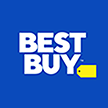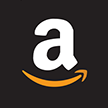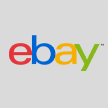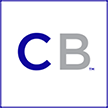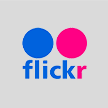
There’s a reason why 92% of social marketers are using Facebook for advertising.
Facebook Ads has consistently maintained high rankings as one of the most chosen social media marketing platforms for businesses of all sizes, and this isn’t just by chance. Though their enormous reach and the familiarity a lot of brands have with Facebook do help, it’s their continual work to update and add features to their platform that keeps them in the top spot.
This year has been no different. While the majority of users were riveted with the upcoming dislike button (which will take the form of different expressive emoticons), marketers have been drooling over new features to Facebook Ads like Lead Ads and an updated Power Editor.
Facebook and Facebook Ads have offered a ton of new changes, and it can be hard to keep up. To make it just a little bit easier, we’ve put together a list of the biggest changes and new features of Facebook Ads this year.
Lead Ads
Lead Ads is considered by many to be the biggest and most exciting addition to Facebook Ads this year, so that’s where we’re going to start.
Lead Ads is Facebook’s solution to the previous struggle with mobile conversions. While 63% of people who clicked on a Facebook ad did so on a mobile device, only 34% of them converted (via a sale, download, etc.). Marketers were frustrated that mobile users weren’t converting as often as desktop users, especially because of the otherwise high engagement and CTRs on mobile.
Lead Ads were created to combat this struggle, and so far, it’s looking good.
Facebook promoted Lead Ads as being as simple as “Tap, Tap, Done” for users, and they were pretty much on point.
When mobile users come across a Lead Ad and click on it, Facebook automatically fills out as many fields as they can based on the information they have on each user (which typically includes things like name and phone number). Users are able to change the information and review it before submitting, but potentially they can submit an entire form without doing anything more than clicking a button.
Not only does this omit the need for mobile users to fill out forms, which is always cumbersome on those tiny phone screens, it prevents them from having to leave Facebook. There were a lot of complaints of off-Facebook landing pages being slow to load, which meant a lot of people would click away before getting a chance to review the landing page or filling out the form.
Considering that the average business was spending 57% of their Facebook Ads budget on mobile, this was particularly frustrating. Now, users don’t have to leave the popular social platform to get to a landing page, and—even better—marketers don’t have to create them.
Lead Ads are currently available for creation through Power Editor. You can create as many customized forms as you’d like, requesting that users submit different kinds of information depending on what you’re trying to learn about them. Requiring information like name, phone number, and zip code is common, but you can get more in depth, too, by asking them questions that you can create yourself.
Lead Ads is now able to integrate with different CRM software via an API, and you can choose from any of Facebook’s marketing partners (but so far you can choose only from Facebook’s partners), such as Driftrock, Marketo, Maropost, Oracle Marketing Cloud, Sailthru, and Salesforce. This makes obtaining and following up with your new leads faster and easier than ever.
Dynamic Product Ads
Announced in February of this year, dynamic product ads came with the promise to help businesses advertise the right products to the right people.
Even with Power Editor’s ability to help with mass ad creation, going through and creating individual ads for different specific products can take a while—especially if you have a large and diverse inventory. A small e-commerce store that only has five products won’t have too much of a problem, but can you imagine how exhausting it would be to create individual ads for an inventory of 50+ products?
Dynamic Product Ads changed this, allowing you to have a fixed template but still enabling you to change certain variables. Once you upload your product inventory to Facebook, you can attach different correlating images, descriptions, and product names to your “dynamic template.” Customers, tracked by Facebook’s tracking pixel, will be shown an ad for the product they viewed on their most recent visit to your site.
Particularly when it comes to remarketing, dynamic product ads have proven their worth. Being able to immediately provide a customer with a Facebook ad for the exact product they were interested in on your site is a powerful thing, and these ads have made it easier and more effective than ever.
Retail giant Target had a 20% increase in conversions when they tested dynamic product ads, and Shutterfly saw a “20%+ increase in click through rate,” showcasing the value that dynamic product ads can have when used well.
Instagram Ads
While Instagram Ads are technically separate, many marketers are approaching them as a branch-off from Facebook Ads, so we’re going to include them in this list. Instagram is, after all, owned by Facebook and their ads are created through Facebook’s Power Editor interface, so you can create nearly identical Facebook and Instagram Ads at the same time.
In October, Instagram Ads were released to all businesses (within certain countries), and businesses have been taking full advantage of them. Since they are created through Power Editor, Instagram Ads come fully intact with a lot of Facebook Ad’s great features, such as:
- Direct response buttons, like “Buy” or “Learn More”
- Highly-refined targeting options
- Video and carousel ads
- Analytics to measure click-throughs and downloads
Like Lead Ads, Instagram Ads are new but have already taken great strides in the marketing space. In fact, 27% of marketers say that they are more apt to use Instagram for their clients’ campaigns than other social networks. And while Facebook still takes the lead, Instagram continues to grow steadily.
With the current success of the platform, I think we can expect to see even more features coming in the very near future, especially considering the high usage rates: the average American spends 21 minutes a day on Instagram, compared to 17 on Twitter and Snapchat each.
Updates to Power Editor & Facebook Ads Manager
This summer gave us big updates to both Facebook’s Ads Manager and Power Editor. For both of these, functionality stayed relatively consistent when compared to how things worked before, but with a revamped design, better organization, and a few new features to make it easier to create and monitor your ad campaigns.
The biggest changes to the Facebook Ads Manager include:
- Simplified navigation. The top navigation is now comprised of easy-to-access tabs that were previously hidden behind drop-down menus. You can also see how much you’ve spent in the past 7 days. (Since I’ve only run campaigns through clients’ Pages, you can see the total on my account is 0.)
- Tools dropdown menu. The tools menu on the top navigation now neatly comprises: Audiences, Audience Insights, App Ads Helper, Pixels, Pages, Advertiser Support.
- Custom Ad Reports. These are given more importance and are placed front and center in the new interface (all of Ads Manager is now the Custom Ad Reports) and include the ability to further customize and filter through them.
- Filters. You can now filter by objective (page likes, clicks to website), delivery (active, scheduled) or metrics (impressions, reach) when looking at ads. This will make comparing your campaigns much easier.
- Metrics. You can also filter metrics by “greater than,” “smaller than,” “in between,” and “is not between,” when looking at campaigns, and you can enter an amount of your choosing.
The biggest changes to Power Editor include:
- A larger area to see all your campaigns. Though this is only a change in appearance, having more room to see a larger list of your campaigns, with the editing pane gone from the bottom half of the page, makes life easier.
- Navigation options (Manage Ads, Audience, Image Library, Reporting, Page Posts, and Tools) are on full display instead of being concealed behind drop-down menus, making them easier to find.
- The sidebar navigation has been adjusted so that you can now get straight to the important information and includes only icons of the campaign, ad sets, and ad groups.
- Filters. You can now filter by campaign, ad set, or campaign objective.
- Reports. Generate reports with new filtered campaign options to see only what you want and you can even save it.
Though a new layout can take some time to get used to, the vast majority of Facebook’s Ads Manager and Power Editor updates make improvements on the platform and provide an increased functionality with great new features.
Equal Distribution Within Ad Sets
Previously, when there were multiple ads within an ad set, ads would receive unequal distribution which meant that one or two ads would run more often than the rest. Particularly when it came to split testing, this posed a problem. How can you reliably split test ads when they’re not being run equally? The only way to avoid this was to create many ad sets with only one ad each.
A few months ago, Facebook made a change to their algorithm so that all ads within an ad set will get equal distribution. Split testers are happy again, as are marketers who want all their ads to run equally, knowing, for example, that some people will respond better to one ad over another.
This is a small and not very flashy new feature, but it’s still an important change that Facebook made this year which marketers should know about.
Relevance Score
In February of this year, it was announced that Facebook was going to release relevance scores to marketers on each ad they ran in an attempt to help increase the overall quality of ads being run.
Financially, it makes sense on both sides of the equation: when ads are relevant, users find the content more useful and get less annoyed, and Facebook makes more money when conversion or CTRs go up for marketers.
All ads receive a numeric relevance score between 1 and 10, with 10 being the highest and most positive score, and the score is continually updated as more and more users interact with your ad.
The score is calculated based on positive and/or negative feedback that Facebook expects an ad to receive from its target audience, and then it is adjusted based on how they actually do react. Metrics evaluated include video views, engagement, conversion, and more. If people hide or report an ad, your score can decrease.
The only ads that are not impacted by the relevance score are those which are bought via reach and frequency focuses.
As it turns out, relevance scores are more than just a useful reporting tool that can help let you know how on-the-mark your ads are; they can (and will) directly affect how much you’re spending on your ads.
In addition to ensuring that your ads are relevant to your audience so that you’re not wasting money on campaigns that don’t convert, having a higher relevance score can decrease the amount you spend on your ads.
While this score isn’t the only factor that affects cost (bids matter, too), anything that can help lower your cost per conversion is a positive thing.
A case study at AdEspresso found that the relevance score weighed heavily; they were able to get 4 times more clicks on a campaign with a higher relevance score, compared to an otherwise identical campaign with a lower relevance score.
Not only will relevance scores give you an additional metric for how you can expect your ad to perform, it can lower your costs—the higher your relevance score is, the less you’ll have to pay to reach your audience.
Free Bonus Download: Get your Quickstart Guide to Facebook Ads for tips on implementing everything in this post! Click here to download it free.
Video Carousel Ads
Video carousel ads are a natural progression for Facebook Ads, as both their carousel ads and video ads are getting a great deal of engagement and performing well.
Carousel link ads drive up to 50% lower cost per conversion and 20% CPC than still link ads, and video posts average 62% more engagement than typical posts—so why not combine them?
Facebook now allows marketers to feature videos as slides within their carousel ads.
Carousel ads are already visually dynamic and can catch a user’s attention and inspire engagement, clicks, and conversions. By adding video to one or more of those slides within a carousel ad, you’re getting the opportunity to truly bring it to life. You’re adding sound and motion, especially if you use it in the first slot to really help capture the user’s gaze.
This can be huge for mobile ads, especially considering that 75% of video views happen on mobile devices.
While we haven’t seen a lot of chatter around this new development (it is, after all, just merging two already-existing features together), I’m personally really happy to see it. I’ve already seen a few ads make use of it (most recently, a stunning Cartier ad), and I think this can increase those already-high engagement and conversion rates even further.
Final Thoughts
Facebook Ads has given us a great deal of changes this year. Though Lead Ads has gotten the majority of the attention, every other new feature and change they’ve made is an advancement to the ad platform and will help plenty of marketers achieve their marketing goals.
Author: Ana Gotter
Courtesy: www.singlegrain.com








